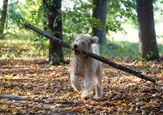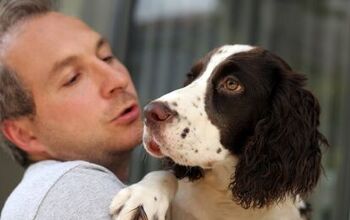It can happen in just a second, even to the most aware and responsible pet parents… the backyard gate is open, the front door was left open a crack, or perhaps a sudden noise startled them on a walk. But before you know it, they’re gone! That immediate, gut-wrenching panic and dread is a feeling no pet parent ever wants to experience. But the truth is, no matter how vigilant you are, it can happen to anyone. In those first terrifying moments, it’s completely natural to feel overwhelmed. It’s okay to acknowledge that fear and distress. However, while those emotions are valid, quick action is crucial. The moments immediately following the realization that your dog is missing are critical. This guide will help you navigate that critical time, equipping you with the knowledge and concrete steps you need to take to maximize your chances of a successful and heartwarming reunion with your pup. Why Every Second Counts When your dog goes missing, the clock starts ticking immediately. I’m not saying that to add to your anxiety, but to underscore an important truth: the chances of finding a lost dog drop significantly with each passing hour and day. While stories of incredible reunions after weeks or months do exist (like the heartwarming stories of pets being reunited with their people after the Eaton Fire), they sadly are the exception. The reality is that the longer your dog is gone, the further they may travel and the more dangers they may encounter, making a reunion more challenging. Understanding the typical instinctual behavior of a lost dog can help you better understand the urgency:Fear and disorientation: A lost dog is often scared and disoriented. Even the most well-trained pup may not respond to their name or familiar commands while experiencing this state of panic. Their world has suddenly become unfamiliar and threatening, which can be overwhelming. Flight response: Many dogs will activate a “flight” response due to intense fear. If they feel threatened (which could result even just by you calling their name too loudly or approaching them too quickly), they may run further away, putting more distance between themselves and safety.Hiding: A frightened dog will often look for safe shelter. This could mean hiding under cars, in dense bushes, under porches, in culverts, in open sheds and garages, or any secluded spot that offers a sense of security from the unknown around them. Beyond their fear-driven actions, which could quickly make the situation far more dangerous, lost dogs face many dangers loose in an unfamiliar environment. This includes: Traffic accidents: Roads pose an immediate and severe threat. Exposure to the elements: Depending on the weather, dehydration, extreme heat, or freezing temperatures can quickly become life-threatening. Injury from other animals or environmental hazards: They might encounter aggressive wildlife, predators, other domestic animals, or injure themselves on fences, sharp objects, or uneven terrain. Ingesting harmful substances: Lost dogs, driven by hunger or thirst, may consume toxic plants, garbage, or chemicals like antifreeze. Theft: While less common than other dangers on this list, the possibility of someone taking your dog, especially if they are a desirable breed, does exist. This is why experts in locating and trapping lost dogs emphasize the importance of the first 24 to 48 hours after your dog goes missing. Acting quickly and strategically during this window significantly increases the likelihood of a successful and timely reunion. Immediate Actions: What to Do in the First HourThe moment you realize your dog is missing, your mind can start racing, and panic can set in. While it’s easier said than done, the most important thing to do in this moment is to take a deep breath and focus. Panicking can cloud your judgment, whereas clear thinking will allow you to take the steps necessary to increase the chances of bringing your dog home safely. Designate a Command CenterIf more than one person is involved with your search, “Command Center” will be important. Ideally, one person should remain at home or the last known location for this purpose. This person can answer phone calls, prepare digital alerts, and be ready in case your dog returns on their own. The other person, or persons, should immediately head out to begin the physical search, checking in with the command center regularly. The Physical Search: Using the Grid MethodYour initial physical search of the area should use the popular “Grid Method,” starting at your dog’s last known location and carefully expanding that area outwards. Call their name loudly and clearly, using familiar commands they associate with positive experiences like “treat” or “come” to entice them to come out of hiding. Bring familiar scents with you. A favorite toy, a piece of their bedding, or even your unwashed clothing can offer a comforting and recognizable smell that might help draw them out or provide a scent trail for them to follow home. As you search, think like a dog: where would they go if they were scared or curious? Check dense bushes, under parked cars, open fields, or areas near water sources. If there are familiar places within your search area (like a dog park or a friend’s house you visit frequently), pay careful attention to those spots. Don’t forget to meticulously check any potential hiding spots you come across, such as under decks, inside sheds, within thick shrubbery, or even culverts. After all, your pup may be too nervous or fearful to come out even if they hear you calling. Alert Your Neighbors and Local Community Begin contacting your neighbors and the local community as part of your search. Knock on doors immediately in your direct vicinity, explaining the situation, providing a clear description or picture of your dog, and asking them to keep an eye out. Request that they check any garages or sheds where your dog may be hiding. Ask each person you speak with to call your Command Center if they see anything. The more eyes and ears you have on the ground quickly, the better.Prepare for Digital OutreachWhile the physical search is underway, the person at the “Command Center” should be preparing the information necessary for digital outreach. Gather a few recent, clear photos of your dog. Also, compile all relevant information, including: your dog’s breed(s), size, color, distinguishing marks, collar/harness information, and their microchip number. Having this ready will make posting online or contacting official channels quicker and easier.

























